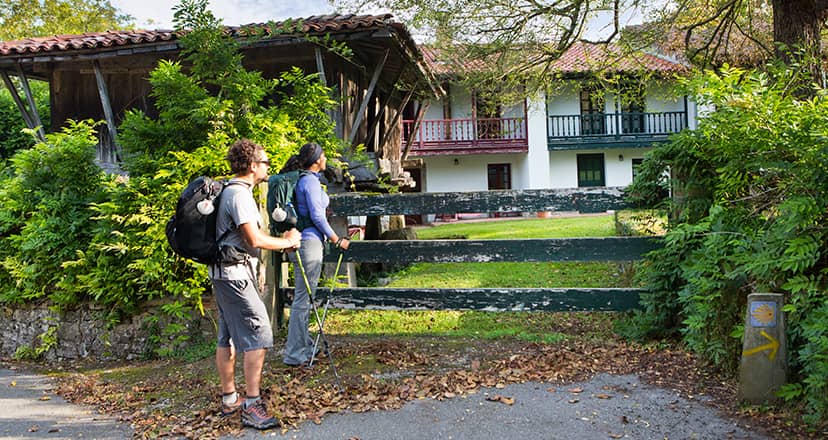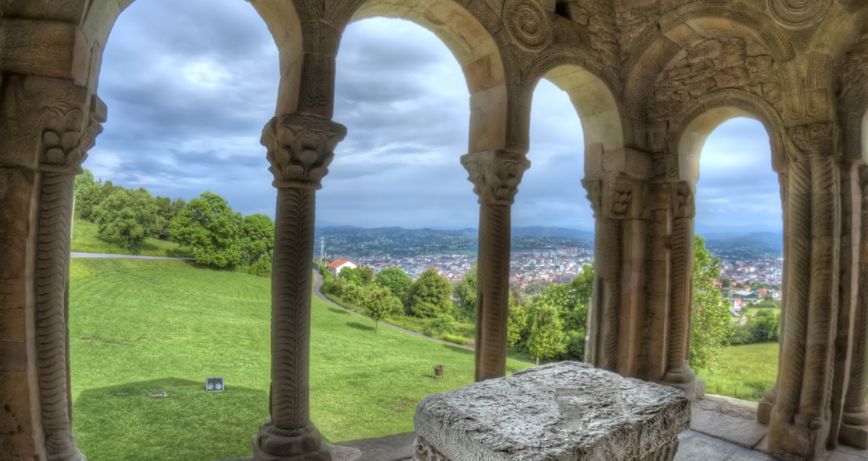Back Pilgrimage along the Asturian coast: The beauty of the Camino del Norte (Northern Way)
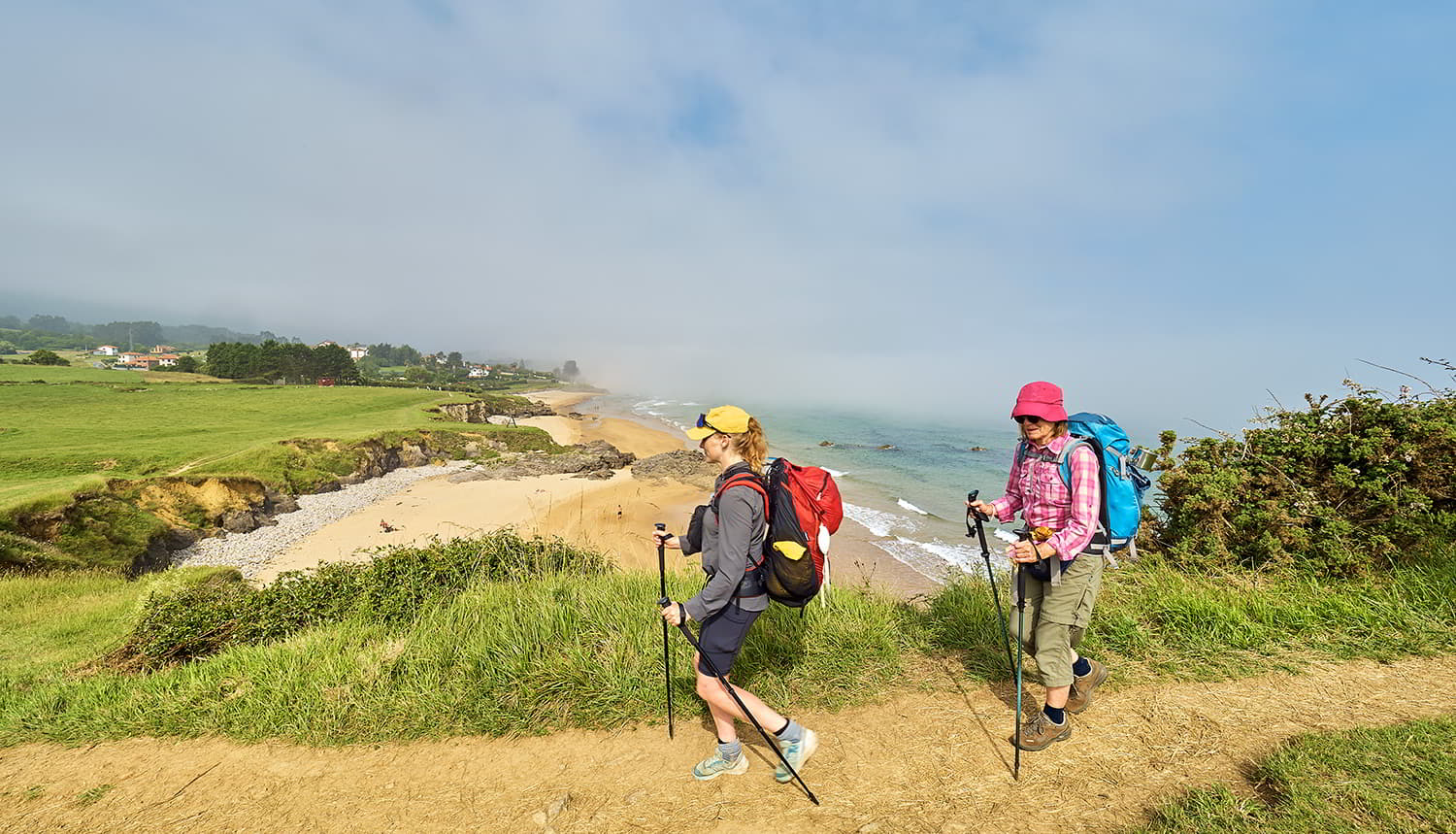
Pilgrimage along the Asturian coast: All the beauty of the Northern Route
The Northern Way, also known as the Coastal Way, runs for 815 kilometres through the northwest of the peninsula, from Irún to Santiago de Compostela, crossing the Basque Country, Cantabria, Asturias and Galicia.
They say that the Northern Way is the most beautiful of all, and there is no doubt that some of its most memorable postcards are to be found on its route through Asturias. Pilgrimage with the Cantabrian Sea on one side and the imposing Picos de Europa on the other, is one of the unforgettable moments of this journey, which make the Asturian section an unparalleled attraction.
The Coastal or Northern Way in Asturias
In the north of Asturias the Jacobean route unfolds colossally, forming a journey between mountains and sea, revealing extraordinary scenery as it winds along the coast, meeting beaches, charming villages and fishing towns. Every step on the Northern Way through Asturias is an encounter with history, nature and hospitality.
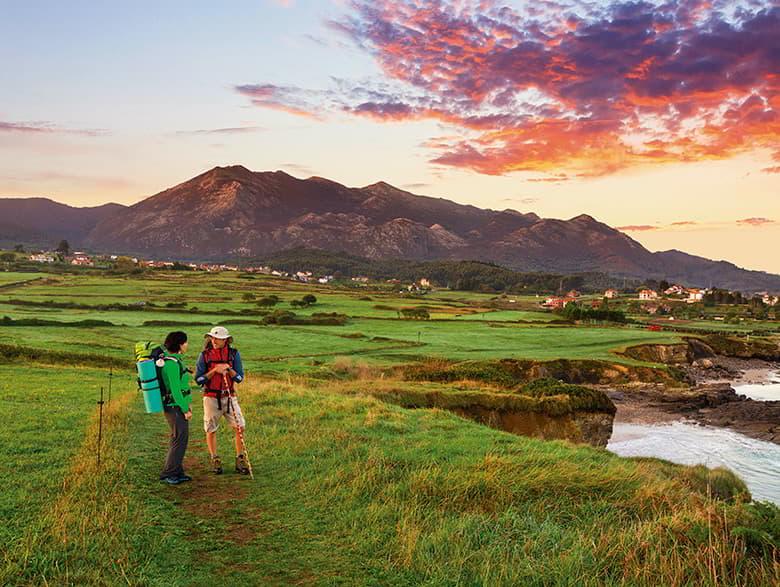
Magnificent panoramic views aside, the real treasure of the Camino in the Principality lies in its people and culture. The albergues offer shelter and welcome pilgrims with warmth. The traditional dishes of the local gastronomy satisfy the most demanding palates, while cider is toasted generously, for health and friendship. The Camino brings people together in a way that only those who follow it can explain.
As it passes through the Principality, the Northern Way is spectacular from beginning to end, the green and blue of the pilgrim's journey, from the moment it crosses the river Deva, bordering Cantabria, and glimpses the beautiful towns of Bustio and Colombres until it crosses the river Eo, 280 kilometres later, to enter Galicia.
The historic Way, the one followed by pilgrims in ancient times to cross the river Eo, heads towards Vegadeo, once past Tol, to cross the river over the stone bridge of Santiago de Abres. There are references to this old bridge as early as medieval times, A Ponte Veya, which finally collapsed in the 18th century. Today the crossing is made over the Fornacho bridge.
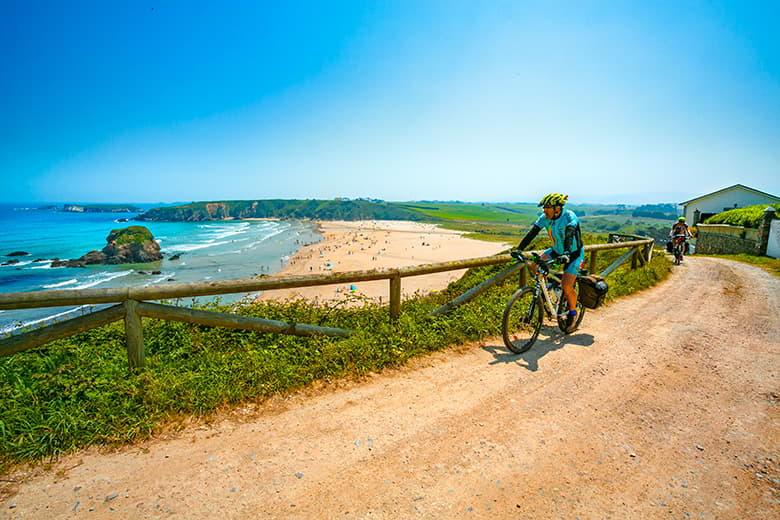
The alternative to the historical route is to continue along the coast and cross the Eo by the bridge of Los Santos, to reach Ribadeo and continue along the coast. It has more services as it is more frequented. Both variants connect in Mondoñedo. This article describes the historic variant, which leaves Asturias via Abres.
Why choose the Coastal or Northern route?
The Northern Way is less travelled than others, such as the French or Portuguese, so the experience is more authentic and quiet, inviting introspection and a greater connection with nature. Especially in the non-summer season.
It is the ideal option to experience the essence of the Camino de Santiago, with the Cantabrian Sea as a faithful pilgrimage companion along much of the route.
From its beginning in the Basque Country to its arrival in Galicia, the Northern Way displays a dazzling beauty that captivates those who walk it. It is no wonder that, in 2015, UNESCO recognised it as a World Heritage Site, an honour shared with the Primitive Way.
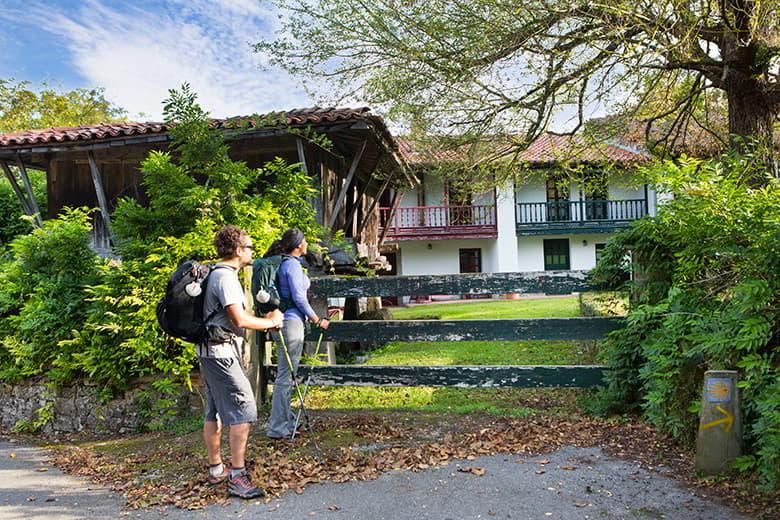
Another reason for choosing this route is that it passes through a good number of towns and cities, which makes it easy to supply food, drink and other necessities; not forgetting the attraction of being able to go sightseeing in places of great interest.
The Northern Way has many centuries of history behind it:
- The Northern Way is one of the oldest routes to Santiago de Compostela since the pilgrimage began in the 9th century, when the remains of the apostle St. James were discovered. Alfonso II, King of Asturias, was the first to make the pilgrimage to Santiago along the Primitive Way in 813.
- In the Middle Ages, the Northern Way was very popular because it was safer. The French route was more dangerous due to the advance of the Muslim armies.
- As the Reconquest progressed, in the 11th century safety returned to the French Way, which regained its popularity, to the detriment of the Coastal Way.
- Nowadays, the Northern Way is once again on the rise, gaining popularity every day for its unique landscapes and natural surroundings, which only this Jacobean route can offer.
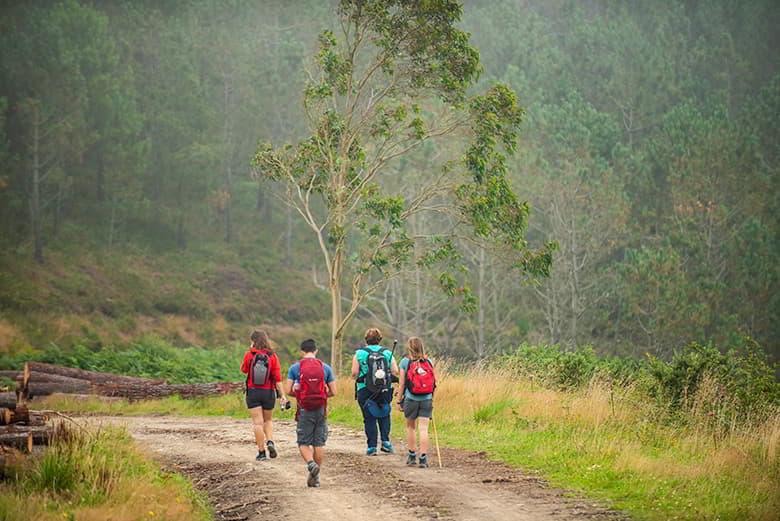
What to see and visit on the Northern Way in Asturias
The Camino del Norte has become one of the most seductive for pilgrims looking for something more than a spiritual experience. There are many attractions of this route as it passes through Asturias. We name some of the points that most attract the attention of pilgrims who visit us, although we apologize in advance for not being able to list them all, as the list would be endless.
Main towns and villages to be visited:
- Bustio and Colombres are the gateway to Asturias, with an outstanding cultural and historical heritage. Here you will find some of the most important indiano houses in the Principality.
- In Llanes, walk along the centuries-old San Pedro promenade, from where you can admire the town and the surrounding cliffs. Visit the Cubos de la Memoria, the most representative monument in Llanes.
- Ribadesella/Ribeseya is one of the most beautiful coastal towns. Its Santa Marina beach and the Ermita La Guía hermitage with its panoramic views are two excellent places to take a break.
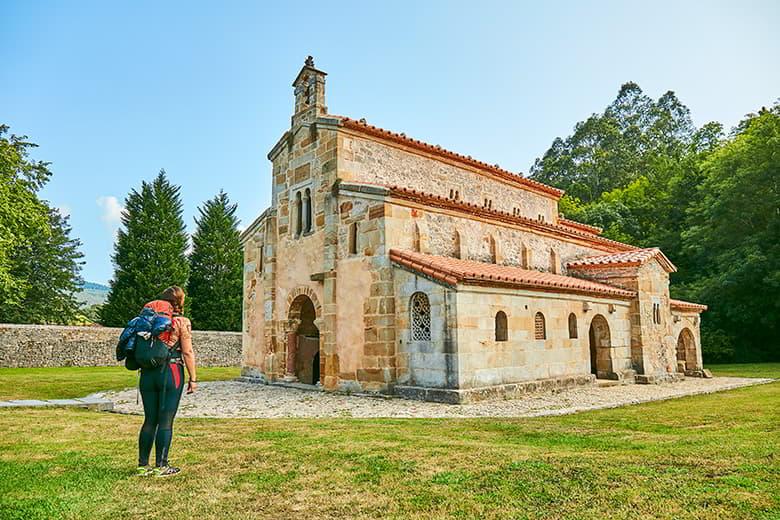
- Villaviciosa, in the heart of the Cider region. This is where the Northern Way of Saint James turns off in the direction of Oviedo/Uviéu, to continue along the Primitive Way. There is a great atmosphere in summer.
- Gijón/Xixón, a city with charisma and a multitude of plans and options. The beach of San Lorenzo is ideal to get your strength back. If you want to be a local, stop for a drink on the Cholo slope. For a good panoramic view, go to the hill of Santa Catalina, crowned by Eduardo Chillida's work "Elogio del Horizonte" (In Praise of the Horizon).
- Avilés and its historic quarter, which is in an excellent state of conservation and has been declared a Historic-Artistic Site. Among many other attractions, here you will find the Oscar Niemeyer Cultural Centre.
- Cudillero, undoubtedly one of the most beautiful and photogenic villages in Asturias. Visit the different viewpoints in the village, the views from each of them are unbeatable.
- Cadavéu. If you have the chance, visit the Ermita de la Regalina hermitage, one of the most iconic places in Asturias.
- Luarca/Ḷḷuarca with its white houses sheltering what is possibly the most picturesque port in Asturias. If you have time, visit its cemetery, it will not leave you indifferent.
- A Veiga/Vegadeo is part of the Biosphere Reserve Río Eo, Oscos and Terras de Burón and is a lively and commercial town on the banks of the Eo.
But it's not all about villages, and on the Northern Way you can also visit some of the most beautiful beaches in Asturias, such as La Franca, Gulpiyuri (an inland beach, formed by the erosion of the Cantabrian Sea on the limestone coast, creating a small natural pool connected to the sea through tunnels and cracks in the rocks), Poo, Barro, Vega, Arenal de Morís, La Isla and Frexulfe.
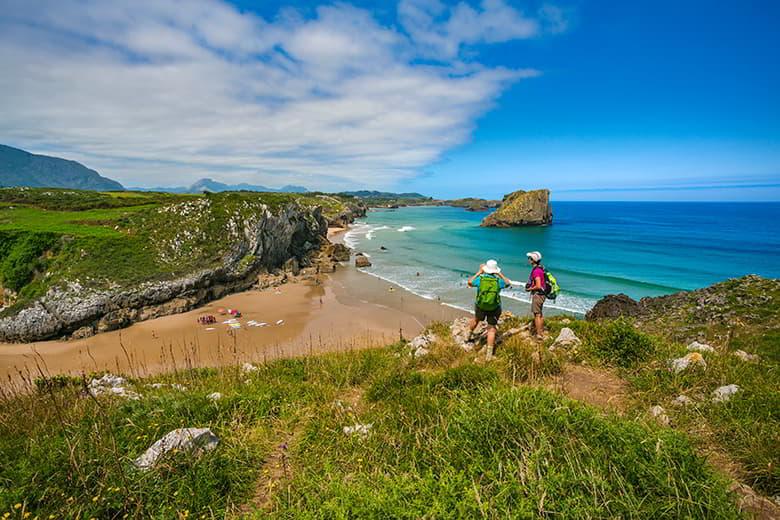
Special mention should be made of the Bufones de Arenillas, a Natural Monument which, with the right conditions, is one of the most impressive natural spectacles you can see in Asturias.
The stages of the Northern Way in Asturias
The Northern Way is the third most kilometres of the Pilgrims' Route, only behind the Silver Route and the French Route. Of its 815 kilometres, 280 run through Asturias, crossing 23 municipalities.
The number of days varies depending on the physical condition of each person, although it is recommended to do it in 13 stages. However, it is a route of great beauty, visiting splendid villages and beaches, which is well worth travelling at a leisurely pace, leaving time, however little, to enjoy the places and the gastronomy.
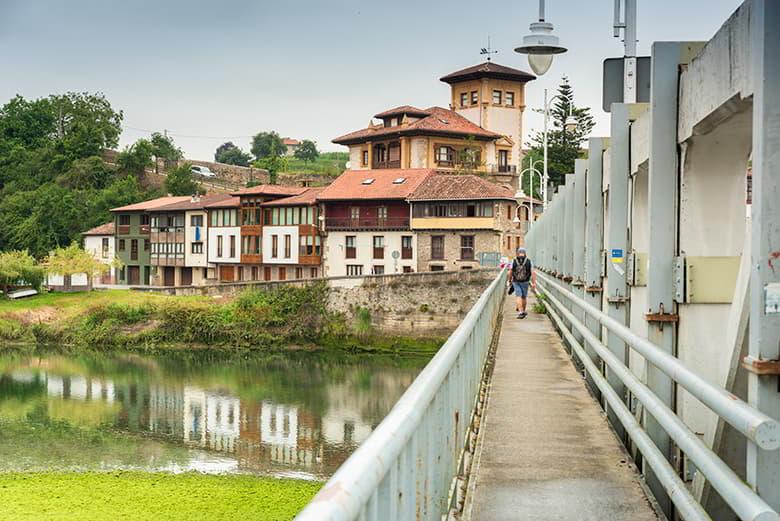
Conclusion
Different are the reasons that attract the pilgrim to make any of the many variants of the Camino de Santiago. What there is consensus is that the Camino del Norte is unique. And is that walking at the foot of the mountains caressing the sea breeze, in uncrowded stages that run through a charming rural setting, makes you enjoy the scenery and landscape like no other pilgrimage route.
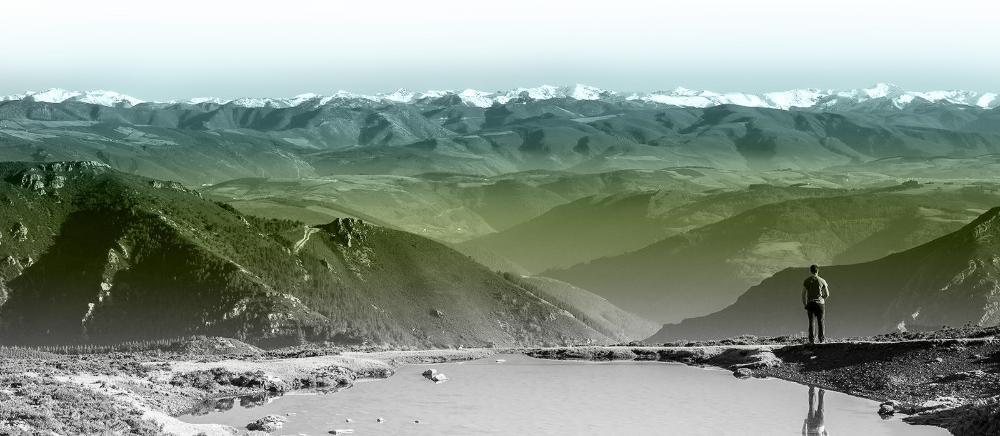
Subscribe to our newsletter and take advantage of offers, discounts, and news
Subscribe

